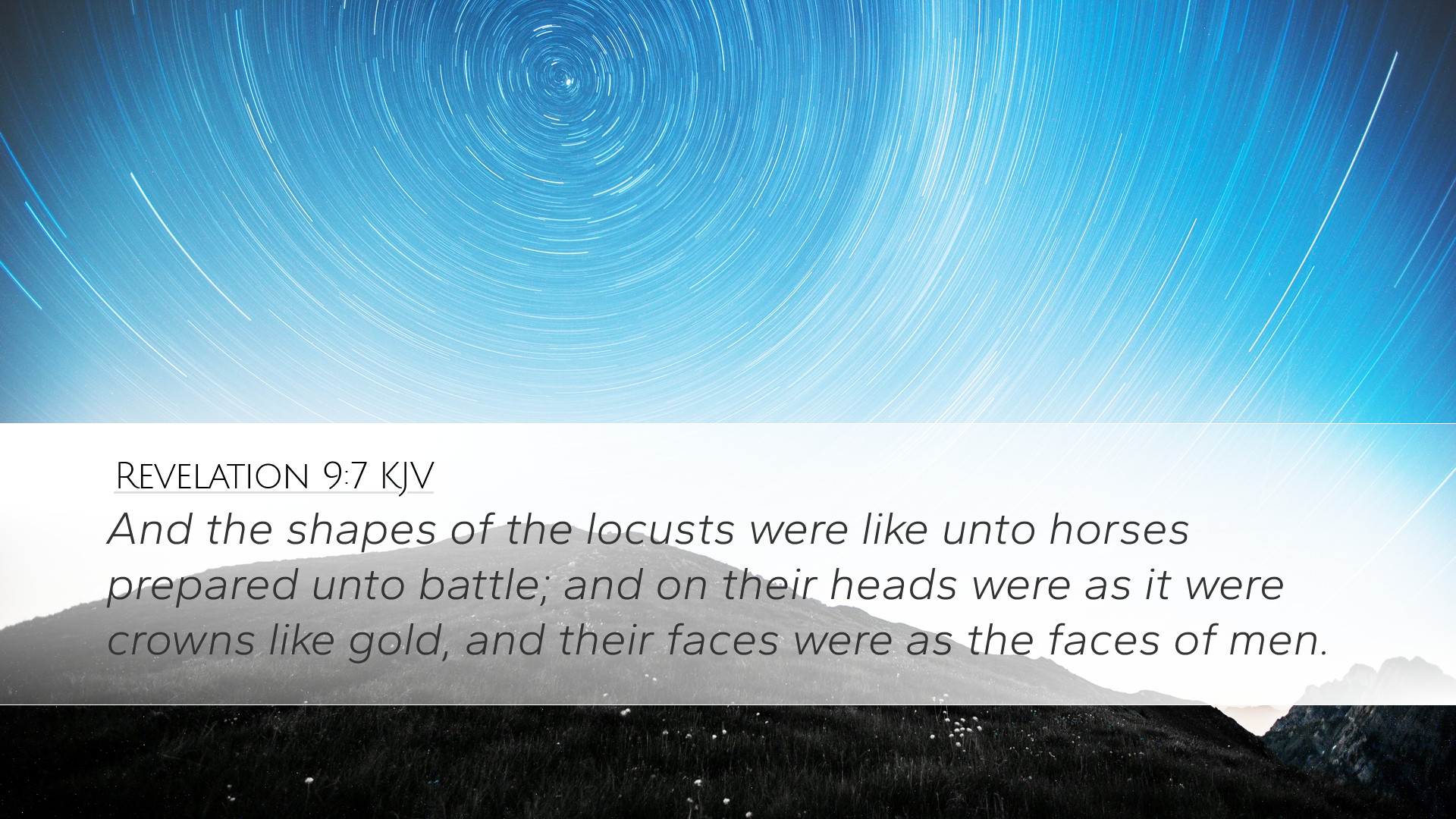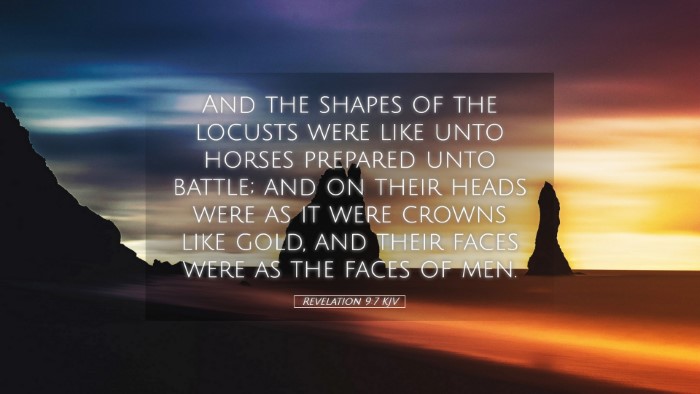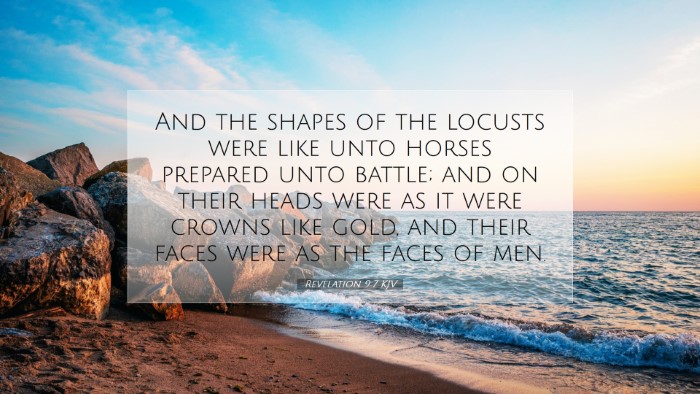Commentary on Revelation 9:7
Revelation 9:7 states: "And the shapes of the locusts were like unto horses prepared unto battle; and on their heads were as it were crowns like gold, and their faces were as the faces of men."
Contextual Overview
This verse is part of the apocalyptic vision given to John concerning the judgments that will be unleashed during the end times. The imagery of locusts signifies a great army, and the detailed description invites interpretations that delve into both literal and symbolic meanings.
Insights from Commentators
Matthew Henry
Henry emphasizes the symbolic nature of the locusts, noting that they represent an invading army whose ferocity resembles that of natural locusts. He states that these locusts are empowered by demonic forces, illustrating the destructive influence of evil.
- Shapes of the Locusts: Henry points out that the "shapes of the locusts" being compared to horses signifies their readiness and strength in battle.
- Crowns of Gold: The crowns imply a kind of authority and victory, which highlights the fearsome nature of these beings.
- Faces as Men: The description of their faces as men suggests a level of intelligence and calculated malice that comes from the demonic influences behind them.
Albert Barnes
Barnes provides a insightful analysis focusing on the implications of the locusts' appearance. He notes that the description matches ancient war horses, drawing parallels to the fear some armies instilled.
- Prepared Unto Battle: Barnes underlines that the locusts are not just destructive; they are organized and purposeful, representing a planned attack on humanity.
- Symbolism of the Crowns: The crowns may indicate that these entities believe they have authority or power, revealing the delusion of their strength.
- Humanlike Features: The comparison to human faces serves to highlight that the impact of their actions will resonate on a personal and societal level, bringing chaos to mankind.
Adam Clarke
Clarke approaches the text by analyzing the implications of the horror these locusts would inflict. His commentary brings a practical application to understanding the metaphors in the text.
- Military Imagery: Clarke suggests that the violent imagery communicates a divine warning of judgment and the chaos to be unleashed by human sinfulness.
- Deceptive Nature: The golden crowns can symbolize a false glory that can be alluring but ultimately destructive, echoing the nature of sin itself.
- Subtle Warfare: His commentary indicates that these entities will wage war against the soul, promoting ideologies that can lead to spiritual demise.
Theological Implications
Beyond the immediate context, the depiction in Revelation 9:7 carries deep theological implications regarding the nature of evil and divine judgment.
- Demonic Forces: The correlations made by commentators suggest that these locusts serve as a representation of demonic oppression that can manifest in various forms — ideologies, persecution, and societal decay.
- The Sovereignty of God: While the imagery is terrifying, it reinforces the understanding that even these judgments are under God’s control and serve as warning signs for repentance.
- Call to Discernment: For theologians and scholars, this passage serves as a call to discern the influences in the world today that mirror the destructive nature of these locusts.
Conclusion
Revelation 9:7 provides a vivid picture that challenges believers to understand the gravity of spiritual warfare. The interpretations from Henry, Barnes, and Clarke collectively urge readers to recognize both the literal and figurative implications of these locusts. The warning contained within this verse is not just for the future; it is an insight that remains relevant, shedding light on contemporary issues of spiritual degradation and the necessity of vigilance in faith.


